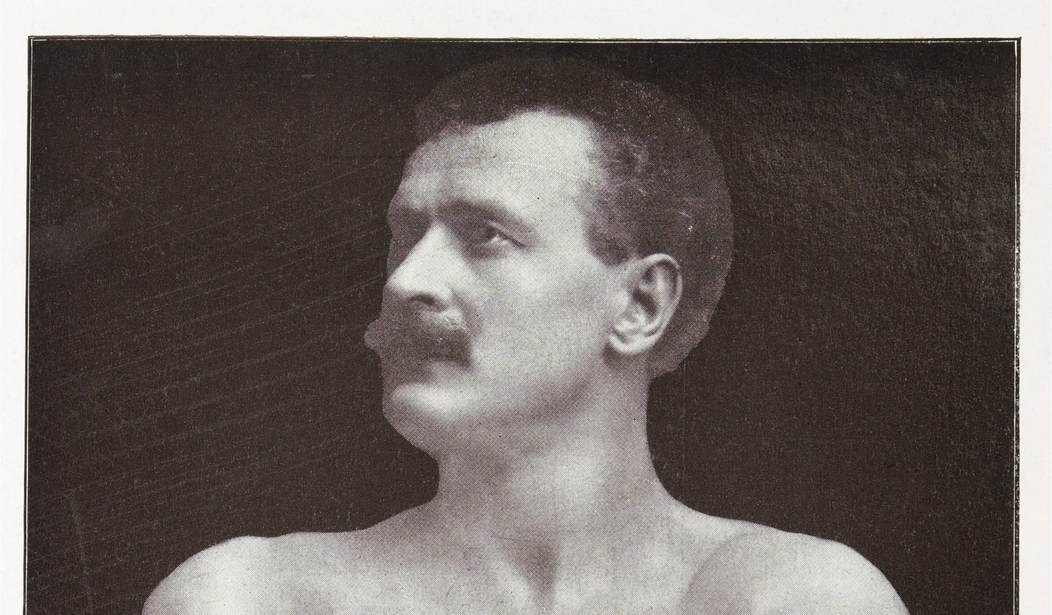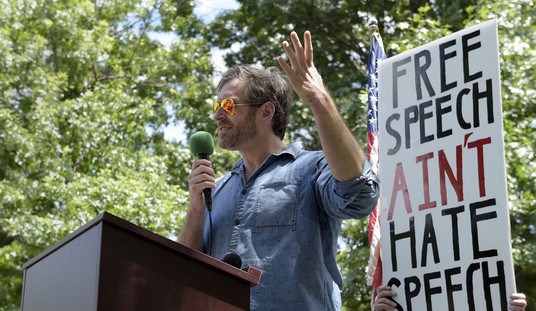The recent release of the American Psychological Association’s “Guidelines for the Psychological Practice With Boys and Men” reveals a new and fragmented view of the concept of masculinity — that masculinity is culturally and socially constructed and can be reconstructed in individual ways according to the experiences and feelings of each individual male, even if those feelings are overtly feminine.
This conclusion is based on various gender theories — all of which reject an objective ideal of masculinity. The APA guidelines don’t lead to more clarity for boys and men. They only muddy the waters because the presuppositions are wrong. In every instance, masculine identity is reduced to shifting power dynamics among subjective entities.
One of the primary influences on gender ideology today is Marxist and promoted by radical feminists who believe that masculinity as we’ve known it is rooted in the oppression of women. This conflict theory sees sexuality and gender only in terms of power relationships. Masculinity, to these people, is a bludgeon wielded by men to control and exploit women and gender non-conforming males.
Such a view is nonsensical since many societies in which strong masculinity has been revered have not oppressed women. Feminists love to talk about the equality of the sexes among the African Bushmen, but they fail to notice that this same culture is both peaceful and values masculinity by initiating its boys into manhood through hunting and physical struggle.
The Marxist view, therefore, can hardly be determined as universal or even applicable to modern America where women live free of oppression.
Another view is derived from evolutionary psychology, which posits that masculinity is determined by man’s evolutionary drive to survive. Men developed as the stronger sex, and so they take on roles that require strength — as protector and provider. Men are, therefore, measured by how well they can guard the perimeter of the family and community.
This view is partially valid and close to the truth because we can’t deny that human psychology has been influenced by millennia of behavior — particularly the need to survive. But this ideology, on its own with a singular focus on psychology, cannot be universal because cultures exist in which peace and an agrarian lifestyle have been intrinsic to their existence. It’s arguable that the need to fight to survive would have been evolutionarily bred out of them, but it hasn’t.
Masculinity defined as strong and warrior-like, with a driving need to protect and provide, is found in almost all cultures from the dawn of time. It is expressed differently, initiated in vastly different ways, and the models are quite varied, but the core characteristic of masculine strength and the need to prove that strength to the group is nearly universally present.
David Gilmore in Manhood in the Making: Cultural Concepts of Masculinity points out that there are some exceptions to this — a few “neuter” societies in which males live androgynous lives and seem to be content with that arrangement. Gilmore, therefore, concludes that masculinity cannot simply be a psychological construct. It also needs to be social and relational.
To address this, Gilmore directs us to another psychosexual development theory — one that puts the distinctions between the feminine and the masculine on a more relational footing. This theory holds that when a baby boy is born, he is psychologically merged with his mother, and his own self is not distinguished from hers.
As the child grows and is able to physically separate himself from his mother, his parents and society reward him for growing up. While both boys and girls go through this separation, it’s harder for a boy. As he separates, he realizes he’s not only his own individual, but his gender identity is different.
“The special problem the boy faces at this point is in overcoming the previous sense of unity with the mother in order to achieve an independent unity defined by his culture as masculine—an effort functionally equivalent not only to psychic separation but also to creating an autonomous public persona,” Gilmore writes. “In most societies, the little boy’s sense of self as independent must include a sense of the self as different from his mother, as separate from her both in ego-identity and in social role.”
To separate from the mother, Gilmore says, the boy must perform some great task to prove that he is no longer dependent on her, that he is his own man. The temptation of the boy who has grown into a man is to want to return to the safety of oneness with his mother. Manhood, therefore, is to resist this urge and grow up; it is “a defense against the eternal child within, against puerility, against what is sometimes called the Peter Pan complex.”
As you can see, there are elements of truth in all of these. None of them, however, really deal with understanding masculinity in a way that isn’t defined by others — whether by the mother, societies from humanity’s evolutionary journey, or the current culture. The male self, in these constructs, is always identified by a shifting and changing subjective entity.
Is there a truly universal construct of masculinity that cuts across psychological, relational, and social lines? I believe there is, and I think Søren Kierkegaard can help us understand it — though he never wrote about gender identity. He did write about the “self” and how one knows the self — and it’s not as defined by others.
If you know anything about Kierkegaard, you might be wondering what I’m aiming at. Wasn’t he the philosopher who wrote that “subjectivity is truth”? How then can he help us understand the objective nature of masculinity? Here’s how — when Kierkegaard said subjectivity is truth, he wasn’t embracing subjectivism. He was saying that a person — a subject — cannot know an objective truth in a meaningful way until he experiences it, until he relates to it in reality and not just ideally apprehended.
Kierkegaard, you see, was concerned about authenticity and relationships, not just syllogisms and rules imposed on the individual by others. One thing he understood was that for a person to know the truth about himself, he has to relate to himself, he has to experience truth himself. He cannot be defined by others outside of his own self. Only when a person knows himself can he then relate to others and develop free, healthy relationships.
So what does it mean for a self to relate to itself, to know the truths about one’s self experientially? First and foremost, this knowledge requires an understanding of what is true. There has to be some objective point of reference since humans aren’t all-knowing and can barely grasp understanding themselves. That truth is not derived from an individual’s own imagination or from others — his culture, his father, or his mother. That truth is rooted in God — the creator of existence, the creator of humanity.
Think of it this way. Imagine holding a string with your fingers. At both ends of the string are two stones. Your fingers represent God, and the two stones represent a person reflecting on himself and his own identity. Without God holding the two together in this quest for self-knowledge and identity, the individual is either left dangling alone with no reference point, no truth, in which to know himself or to relate to others. Or society, culture, a powerful totalitarian state, a religious cult — you name it — is holding the string, determining the “truth” of his identity.
Masculinity is a universal, objective truth determined by our Creator. However, how each individual relates that truth to himself and experiences it according to his unique qualities is different. It’s not contradictory to others because the masculine truth is still objective and universal. It is just different according to individual interests, abilities, attributes, and social influences.
With the abandonment of God from society and particularly the social sciences, we have been left struggling to put together pieces of a puzzle without any concept of what the puzzle is. We will be forever confounded, confused, and — at worse — controlled by all the subjective expressions of identity and how they relate socially and psychologically if we don’t understand the objective nature of sexuality.
The divinely created construct of masculinity explains why we can have one culture that determines manhood by how many lashes a boy takes in an initiation ritual, and another that requires boys to hunt and kill a large animal. Or another that requires that he grow up and leave the house, taking on his own responsibilities.
All of these are based on the same truth — a man must take risks and be strong. “Most social scientists would agree,” Gilmore writes, “that there do exist striking regularities in standard male and female roles across cultural boundaries regardless of other social arrangements.” To truly understand this, we cannot simply examine the subjects, we must know God — who He is and His truth about manhood.
But what about those rare gender-neutral societies? If there’s a universal masculinity in God, how is it that these societies exist with no cultural expression of masculinity? More than likely the individuals in those societies have refused to recognize their true identity as men and women. They’re living inauthentically. This arrangement can’t be sustained, which is why it’s an anomaly. This conclusion makes more sense than trying to reconstruct the rest of the world and human history to fit an outlier.
If the APA had simply stated that there is an objective standard for masculinity, but it is expressed differently by various cultures and individuals, that would be acceptable — and true. They don’t. They attack the objective standard of masculinity; redefine it as something dangerous by focusing on men behaving badly, not men behaving as men; and replace it with a conga line of disparate “masculinities” that deviate and even contradict the core nature of masculinity.
By tossing masculinity to the wind and watching it blow in a million different pieces, controlled only by the psychologists trained to bring order to the chaos, boys and men are robbed of truly understanding their identity as men. The APA tells them not to look to God as the source of masculinity, but to look only within themselves in search for some measure of truth or to take their cues from culture and society.
If these are the guidelines our society uses to raise boys to men, God help us.









Join the conversation as a VIP Member